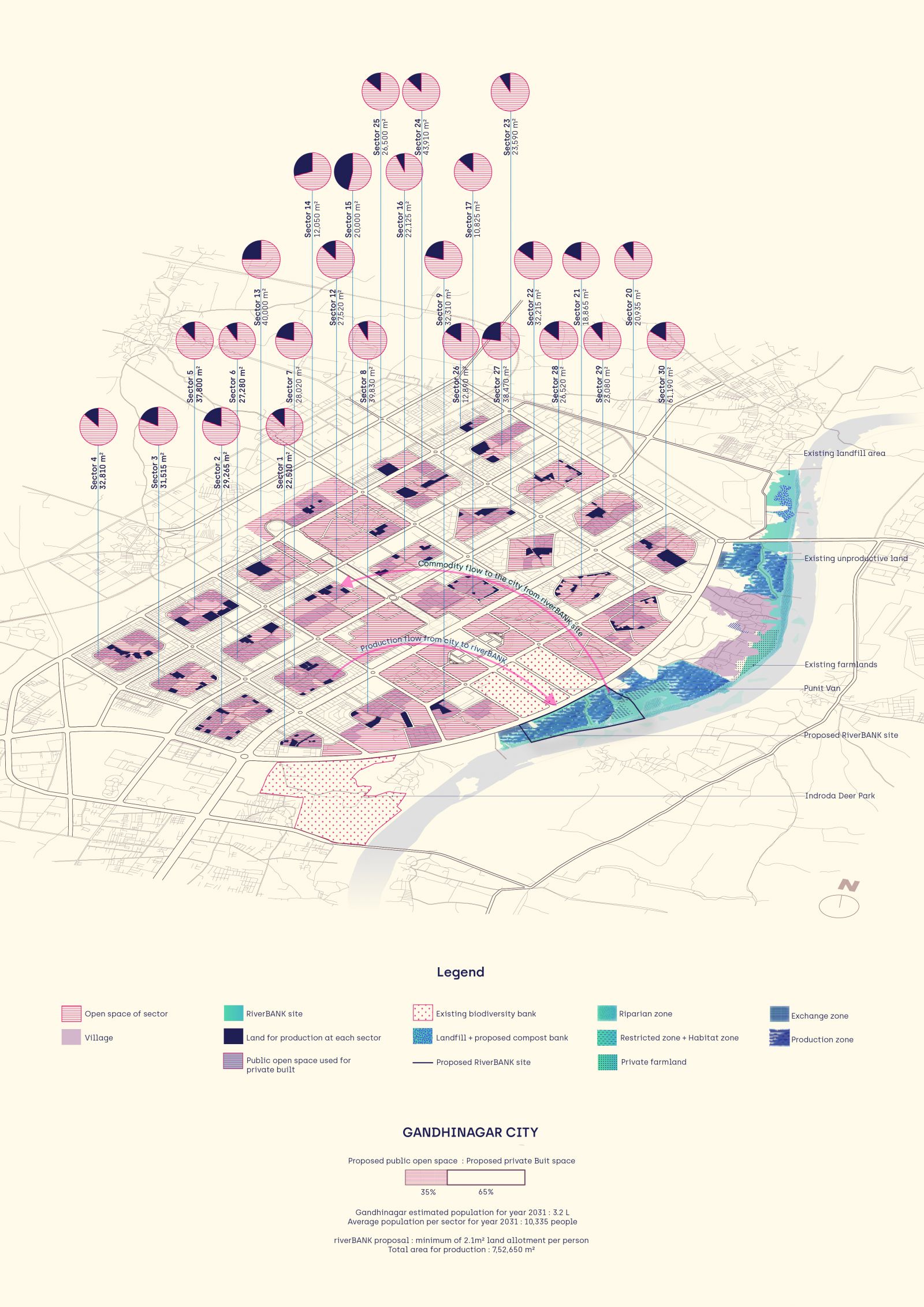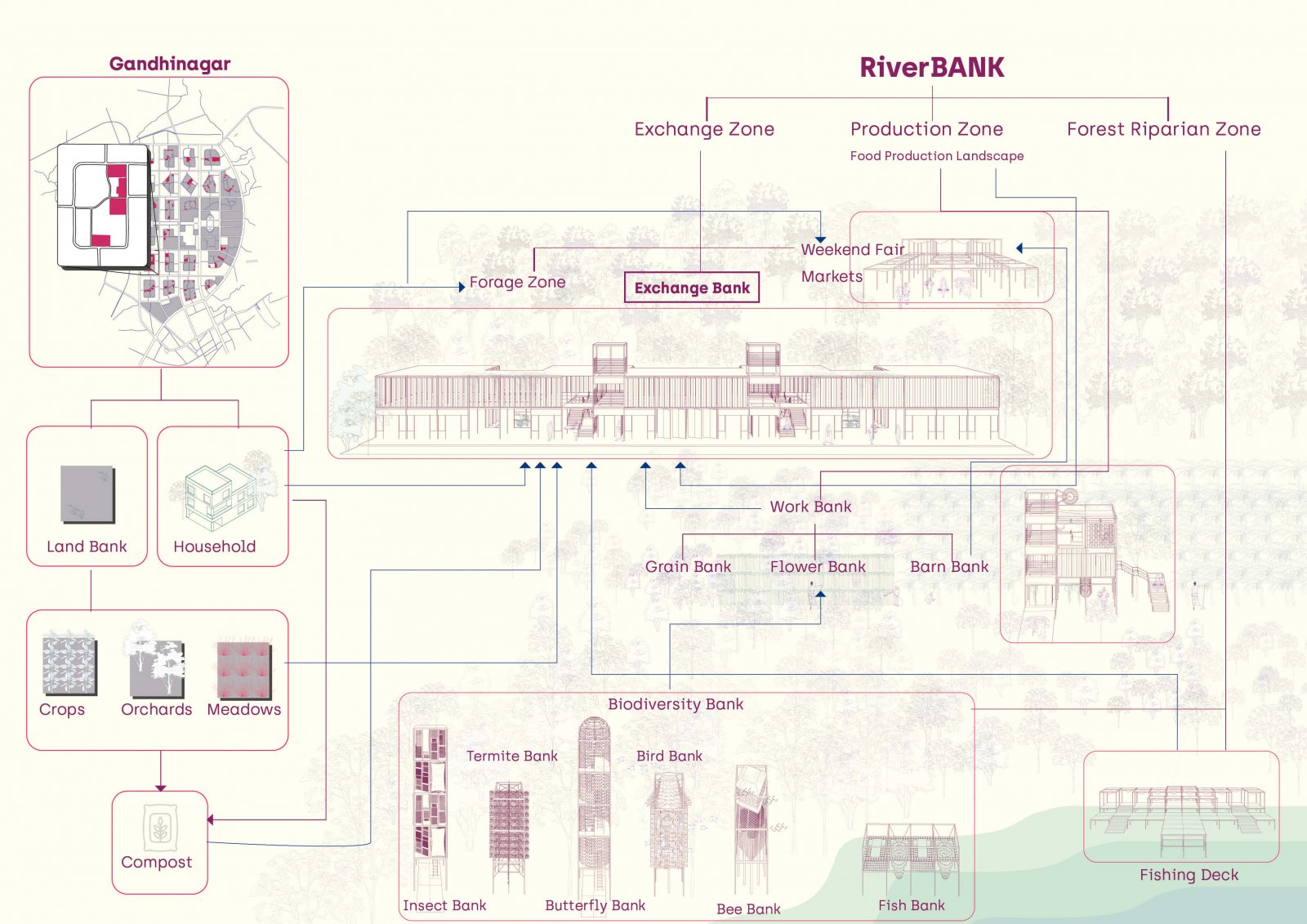Your browser is out-of-date!
For a richer surfing experience on our website, please update your browser. Update my browser now!
For a richer surfing experience on our website, please update your browser. Update my browser now!
The project RiverBANK is an integrated system of productive agro-based network that lends spaces to the community for growing food (at the river-side site and in the city). The main design is at the river edge where the sloped terrain is re-structured into terraced spaces for the community to grow food. The primary and secondary trail network is designed through the entire bank and different blocks are divided into zones for the cultivation of different types of food. This entire food zone is supported through an array of radical infrastructures designed for different biodiversity species integral to creating an ecosystem of resilience and natural practices. These products/services derived from the RiverBANK can be exchanged through community currency and bartered across the city to fulfill the daily requirements of people. If not the entire supply of food, a small percentage can be met through this agro-based development. Many marginal and lower-income groups can have access to healthy food and nutrition. The riverbank creates a productive food flow network into the city by utilizing under-utilized land and making resources available in close proximity.
View Additional Work
.jpg)

(1)(1).jpg)
(2).jpg)
(1)(1)(1)(1).jpg)
(1).jpg)
(1)(1).jpg)
(1)(1)(1).jpg)
.jpg)